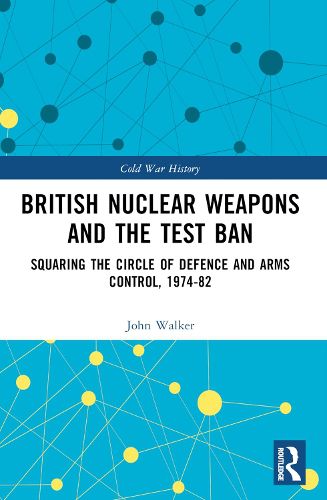Readings Newsletter
Become a Readings Member to make your shopping experience even easier.
Sign in or sign up for free!
You’re not far away from qualifying for FREE standard shipping within Australia
You’ve qualified for FREE standard shipping within Australia
The cart is loading…






This book provides an overview of how the UK tried to maintain and modernize its strategic and tactical nuclear weapons during 1974-82, whilst also pursuing a comprehensive nuclear test ban treaty.
The core question addressed in the book is how a test ban treaty would impact on the reliability and safety of the UK's nuclear weapons and how this would constrain and limit efforts to secure a comprehensive treaty that would prohibit nuclear testing indefinitely. An added complication lay in the fact that a ban treaty could also prevent or limit the UK's ability to test new warhead designs to replace its existing tactical nuclear weapons and a new strategic successor system to Polaris. How all of this played out between 1974 and 1982, when the UK announced its decision to acquire Trident and the US decided that a test ban treaty was no longer in its security interests, is discussed. A detailed review, based on the available materials in the UK National Archives, also looks at the aims and objectives of UK nuclear tests in Nevada and on the decisions taken on the Chevaline warhead and its Trident replacement. The book also considers whether there was a far greater threat to the UK nuclear programme from shortages of skilled craftsmen and industrial action at the Atomic Weapons Establishment at Aldermaston than from a test ban treaty. It also looks at whether nuclear defence trumped arms control objectives during this period.
This book will be of much interest to students of British politics, nuclear proliferation and Cold War History.
$9.00 standard shipping within Australia
FREE standard shipping within Australia for orders over $100.00
Express & International shipping calculated at checkout
This book provides an overview of how the UK tried to maintain and modernize its strategic and tactical nuclear weapons during 1974-82, whilst also pursuing a comprehensive nuclear test ban treaty.
The core question addressed in the book is how a test ban treaty would impact on the reliability and safety of the UK's nuclear weapons and how this would constrain and limit efforts to secure a comprehensive treaty that would prohibit nuclear testing indefinitely. An added complication lay in the fact that a ban treaty could also prevent or limit the UK's ability to test new warhead designs to replace its existing tactical nuclear weapons and a new strategic successor system to Polaris. How all of this played out between 1974 and 1982, when the UK announced its decision to acquire Trident and the US decided that a test ban treaty was no longer in its security interests, is discussed. A detailed review, based on the available materials in the UK National Archives, also looks at the aims and objectives of UK nuclear tests in Nevada and on the decisions taken on the Chevaline warhead and its Trident replacement. The book also considers whether there was a far greater threat to the UK nuclear programme from shortages of skilled craftsmen and industrial action at the Atomic Weapons Establishment at Aldermaston than from a test ban treaty. It also looks at whether nuclear defence trumped arms control objectives during this period.
This book will be of much interest to students of British politics, nuclear proliferation and Cold War History.